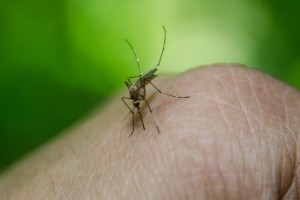
WHO issues new guidance for research on genetically modified mosquitoes to fight malaria and other vector-borne diseases
Geneva: Malaria and other vector-borne diseases, including dengue and Zika, affect millions globally. More than 400 000 people a year die from malaria alone. Current strategies for limiting transmission of mosquito-borne diseases are only partially effective. New, complementary approaches are needed to close the gaps in current vector control interventions, such as effective control of outdoor biting, and to provide alternatives to manage the increasing threat of insecticide resistance. If proven safe, effective and affordable, genetically modified vector mosquitoes could be a valuable new tool to fight these diseases and eliminate their enormous health, social and economic burden. Research suggests genetically modified mosquitoes could be a powerful and cost-effective tool to supplement existing interventions.
The World Health Organisation (WHO) today issued new guidance for research on genetically modified mosquitoes to fight malaria and other vector-borne diseases. The guidelinesets essential standards to inform future research and development on genetically modified mosquitoes , particularly in addressing issues relating to ethics, safety, affordability and effectiveness.
The guidance framework for testing genetically modified mosquitoes, developed in partnership with TDR, the Special Programme for Research and Training in Tropical Diseases, and the GeneConvene Global Collaborative, an initiative of the Foundation for the National Institutes of Health, describes best practices to ensure that the study and evaluation of genetically modified mosquitoes as public health tools is safe, ethical and rigorous.
“We urgently need innovative approaches to help control mosquito-borne diseases, which have a devastating impact around the world,” said Dr John Reeder, TDR Director. “Genetically modified mosquitoes is one such approach, but we want to be sure it’s fully and responsibly evaluated, as outlined in a recent WHO position statement,” he said.
“Like any new public health intervention, genetically modified mosquitoes raise new questions for researchers, affected communities and other stakeholders,” said Dr Michael Santos, Director of the GeneConvene Global Collaborative. “The updated guidance framework aims to answer these questions and help ensure that testing of genetically modified mosquitoes is as rigorous as it is for other public health products – and that it generates quality results to guide decisions about if and how these technologies are used.”
“Over the last 2 decades, we have achieved remarkable results with existing malaria control tools, averting more than 7 million deaths and 1.5 billion cases of the disease,” said Dr Pedro Alonso, Director of the WHO Global Malaria Programme. “However, progress towards key targets of our global malaria strategy remains off course. Genetically modified mosquitoes are one of a number of promising new tools that could help speed the pace of progress against malaria and other vector-borne diseases.”
“The incidence of dengue continues to increase and affect people in over 129 countries, so we need more sustainable vector control tools to stem the tide of dengue and other arboviral diseases and a few novel tools offer the potential to control these diseases,” said Dr Mwele Malecela, Director of the WHO Department for the Control of Neglected Tropical Diseases.
“We welcome this new guidance from WHO which will help countries suffering from mosquito-borne diseases to evaluate a promising new intervention,” said Professor Aggrey Ambali, Senior Advisor at the African Union Development Agency-New Partnership for Africa’s Development (AUDA-NEPAD), the development agency of the African Union.
The new guidance addresses specific questions and challenges associated with research and development on genetically modified mosquitoes, including standards for decision-making about how and when testing should proceed. By establishing a common set of expectations that is specific to genetically modified mosquitoes, the new resource will enable more informed and rigorous evaluation by researchers, developers, those responsible for regulatory and policy decisions and the people to whom these stakeholders are accountable.
The guidance builds on an earlier document published by TDR and FNIH in 2014, incorporating the latest scientific advancements related to genetic modification of mosquitoes, as well as other key updates and learnings related to safety and ethics, including:
- methods for understanding the implications of genetically modified mosquitoes for human health, animal health and the environment;
- increased understanding of the most effective strategies for risk assessment and stakeholder engagement;
- clearer criteria for projects to proceed from one testing phase to the next, incorporating descriptions of the steps needed to safely and responsibly take genetically modified mosquito technologies – including those incorporating gene drive – into the field; and
- a concrete set of safety and efficacy considerations that should be evaluated at each phase of testing, to inform decisions about further testing and implementation.





